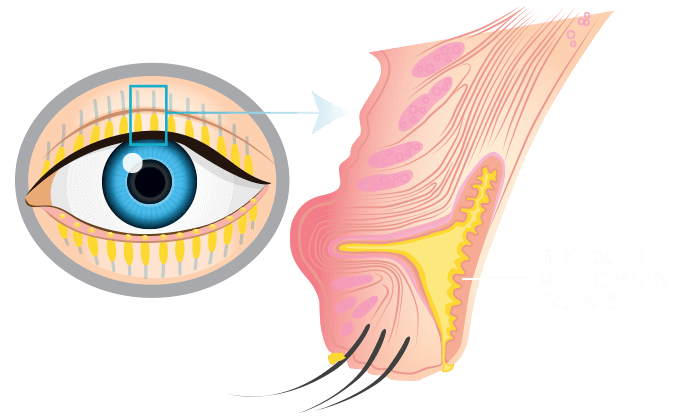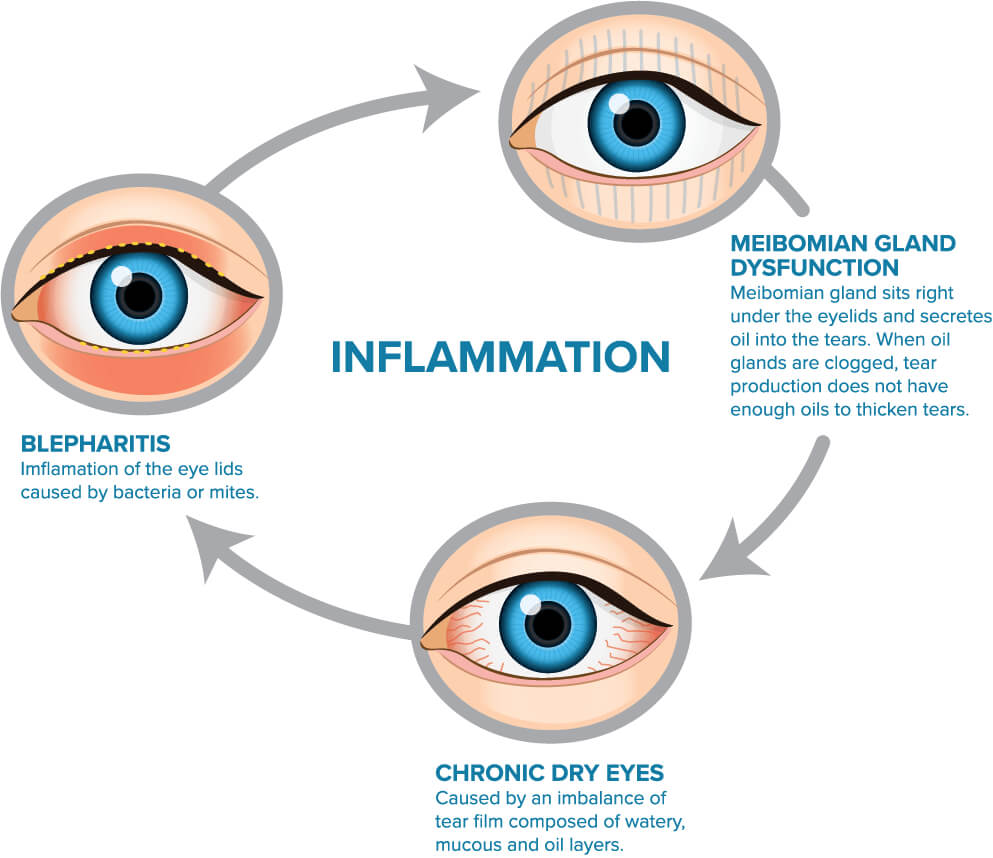
Meibomian gland dysfunction (MGD) is a common eye condition, yet many people don’t realize they have it. MGD is a blockage, or other abnormality, of the meibomian glands (the tiny glands along your eyelids) so that they don’t secrete enough healthy oil into tears. [1]
The function of the meibomian (“my-BOH-mee-an”) glands is to secrete an oil called meibum (“my-BUM”) onto the surface of the eye. These oils help keep the tears from evaporating too quickly. Meibum, water, and mucus form the three layers of tear film that keep your eyes moist.[1]
Changes in the amount or quality of the oil, or to the glands themselves, can lead to MGD. It’s often the result of a combination of things. The most common type, obstructive MGD, happens when the gland openings get clogged and less and less oil reaches the eye surface. [1]
MGD is also a leading cause of dry eye and is associated with an eyelid problem called blepharitis.
MGD is best handled when treated early and should include patient education. Your eye care professional might recommend warm compresses with a lid massage, eyelid cleaners to help decrease inflammation around the eyes, and gland expression. [2]
Dry eye disease (DED) affects hundreds of millions of people throughout the world and is one of the most frequent causes of patient visits to eye care practitioners. It is a symptomatic disease, characterized by a vicious cycle of tear film instability and hyperosmolarity, which leads to increased ocular surface inflammation, damage, and neurosensory abnormalities. Moderate to severe DED is associated with significant pain, limitations in performing daily activities, reduced vitality, poor general health, and often depression. [4]


[1] Hellem, A. (n.d.). Meibomian Gland Dysfunction (MGD): The Cause of Your Dry Eyes. Retrieved from https://www.allaboutvision.com/conditions/meibomian-gland.htm
[2] Opitz, D. L., Harthan, J. S., Fromstein, S. R., & Hauswirth, S. G. (2015, August 28). [Full text] Diagnosis and management of meibomian gland dysfunction: Optometrists& | OPTO. Retrieved from https://www.dovepress.com/diagnosis-and-management-of-meibomian-gland-dysfunction-optometrists39-peer-reviewed-fulltext-article-OPT
[3] Dry Eye. (n.d.). Retrieved from https://www.aoa.org/patients-and-public/eye-and-vision-problems/glossary-of-eye-and-vision-conditions/dry-eye
[4] DRY EYE REDEFINED: TFOS DEWS II REPORT. (n.d.). Retrieved from https://www.tfosdewsreport.org/